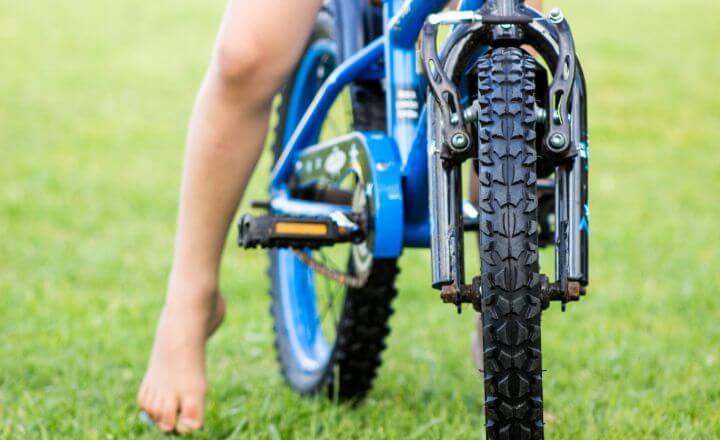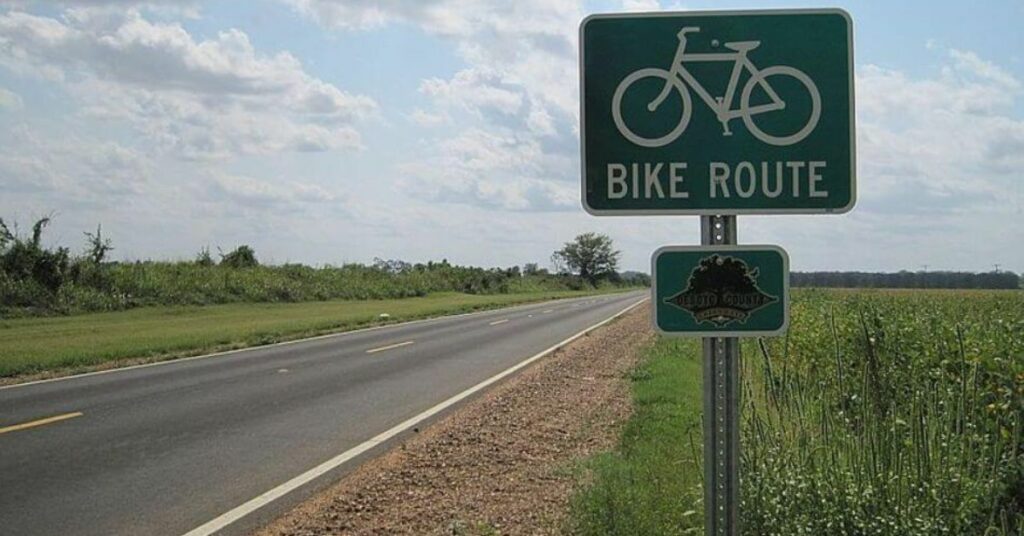(Last updated on March 10th, 2023)
The wheel size is one of the most confusing aspects of owning a bike. Every country had its own system for labeling bicycle wheel sizes, making buying new wheels complicated. Over time, those systems converged, creating a very messy way of labeling wheels.
If you purchase a new bike at a bike shop, they’ll handle the wheel size for you. But if you want to put new wheels on your bike, purchase a used bike that doesn’t have wheels, or if you’re just a geek like me, you’ll want to know how to measure your bike’s wheel size.
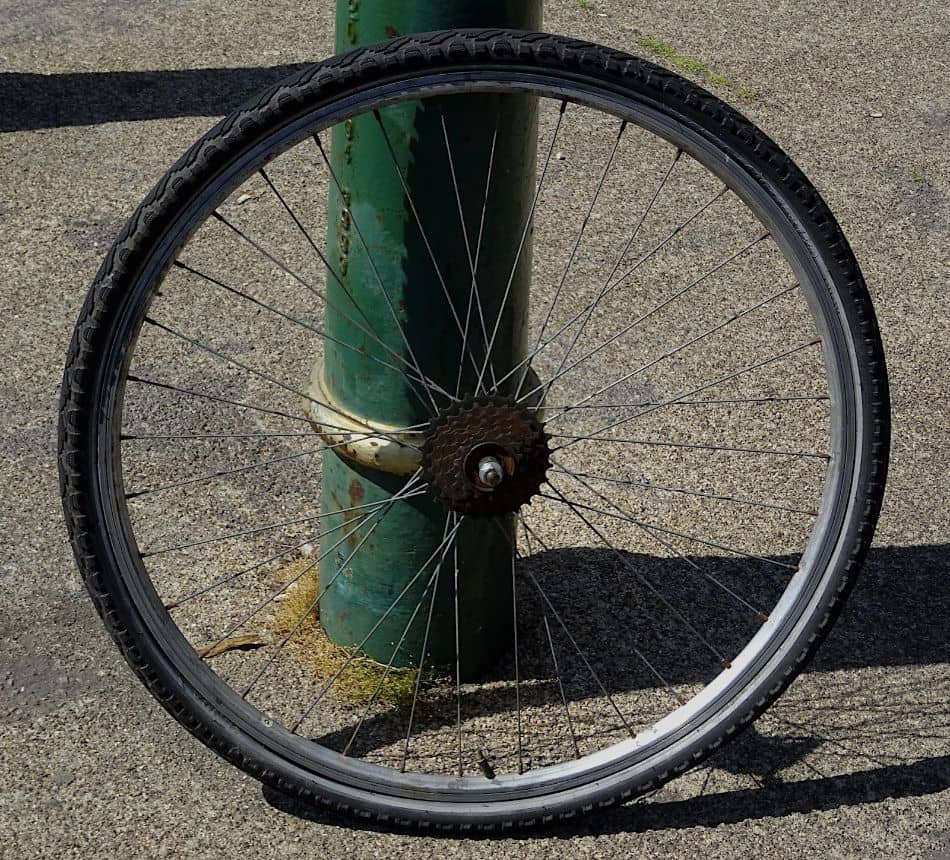
In this article, I will discuss measuring your bike wheel size. I’ll give you several different methods so you can pick the one that works best for you. But first, let’s talk about basic wheel terminology and why finding the correct size matters. Let’s get started.
Why Bike Wheel Size Matters
There are several reasons you might want to know your bicycle wheel size. For example, if you need new wheels, you’ll obviously need to know what wheels and tires to put on your bike.
But if you just want to change out the tires (the rubber parts), you’ll also need to know what size and width of the tire can fit on your rim. On the other hand, even if you leave all of that up to your bike shop, you might want to know your wheel size to get the most accurate results from your bike computer or trainer.
It’s also important to know that different types of bikes take different sizes and widths of wheels. For example, road bikes have skinnier tires than mountain bikes, even with the same wheel size.
Basic Wheel Terminology
Before we get into how to measure your bicycle wheel, let’s talk about the anatomy of the wheel, so you know which parts to measure.
1. Wheel
The bike wheel refers to the ‘hardware’ part of the tire. It’s the hub, spokes, and rim. These parts can be made of aluminum, carbon, and even steel. This does not refer to the rubber parts of the bike, although some people will use the wheel as an all-encompassing term to cover every aspect of the bike wheel and the tires.
2. Tire
When we talk about bike tires, we mean the rubbery parts with the tread. It’s sort of U-shaped and open. Road tires are smoother, and gravel or mountain bike tires are knobbier. The sides are stiffer so they can attach to the rim.
3. Rim
The rim is the hard part of the wheel that holds the tire in place. It’s also the spot where the nipples of the spokes attach.
4. Inner Tube
The inner tube is part of the bike that holds the air! It’s a rubber tube that goes in between the rim and the tire. It has a valve that pokes through the rim so you can blow it up.
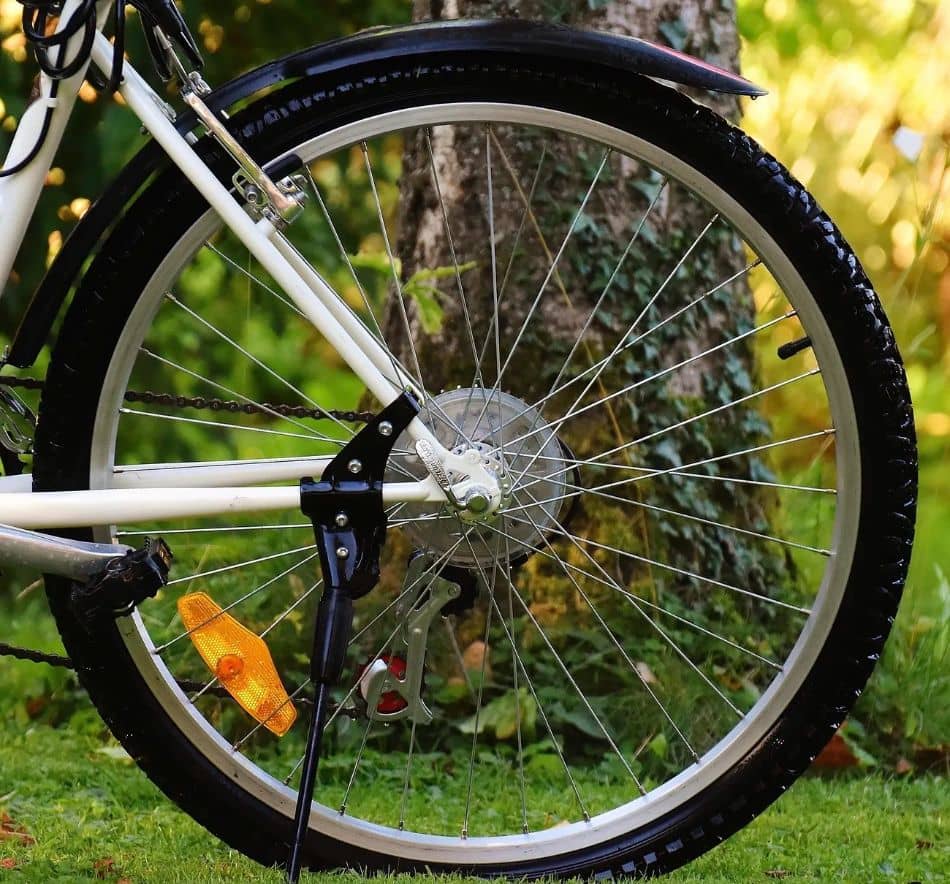
The ISO Method
The International Standards Organization worked to make bicycle tire sizing more consistent by adopting the ETRTO system (the European Tire and Rim Technical Organization). It’s composed of two numbers. The first number explains the width of the tire in millimeters. The second number is the tire’s diameter at the tire bead in millimeters.
Typically, you’ll find the ISO size on the tire’s sidewall. Here are some examples of common sizes in the chart below. We included the sample numbers to know if you’re getting it right when you measure your tire.
The Most Common Adult Bicycle Tire Sizes
| Common Size | ISO Size | Type |
| 26” | 559 | Mountain bikes, hybrid bikes |
| 27” | 630 | Older Road bikes |
| 27.5” / 650B | 584 | Mountain bike |
| 29” /700C | 622 | 29” refers to mountain bikes700C refers to road (skinnier tire) |
| 650B | 584 | Specialized bikes |
| 650C | 571 | Small road or triathlon bikes |
| 700C | 622 | Modern Road bikes |
Tire Width
The next number in conventional tire sizing refers to the tire’s width (remember, this is the rubber part). Sometimes, though, the numbers are a little exaggerated. For example, my road bike has 700C x 25mm. However, many pro cyclists today are running 700C x 28mm tires. So the Iso number is generally more accurate.
Although you need to get the correct tire size for your new tires, a range of widths will typically fit on your rims. Depending on your needs (terrain, weather, etc.) and the width your bike frame can accommodate, you may want to use wider or skinnier tires.
Even narrow rims may be able to fit tires as wide as 32mm, but tires that wide might not fit into your bike frame, so you’ll have to check your frame’s tire clearance to make sure, especially if you have rim brakes. Anywhere from 23 – 28mm is pretty common for road tires, while touring bikes may sit around 32 mm. Mountain bikes are even wider and are described in inches – generally 2 to 2.4 inches. Fat bikes will go wider, from 3 to 4 inches or more.
Here are a few older tire sizes. If you have an older bike, you’ll need to know these.
Common Older Tire Sizes
If you have a vintage bike, you might need to know some of the older tire sizes.
| Standard Size | ISO Size | Used For |
| 16” | 305 | Children’s bikes and recumbents |
| 20” | 406 or 451 | Recumbents, children’s, or BMX |
| 24” | 507 540 | Children’s mountain bikes Wheelchairs |
| 26” | 597 | Older Schwinn bikes |
Park Tool demonstrates how to read the ISO numbers on the sidewall of your tire and match them up to the numbers on your bike wheel.
Find Your ISO Bike Wheel Size
The ISO number is the most accurate sizing for bike wheels and tires. You’ll need a metric tape measure to measure with.
1. Prop up your bike so you can easily access the wheels.
2. Measure the radius of the bike wheel precisely. Measure from the edge of the rim (not the rubber part) to the centre of the wheel.
3. Multiply by 2 to get the bike wheel diameter in millimeters.
4. Measure the Width of the tread in mm.
5. Put your measurements in ISO standard format. (width first, then diameter. IE, 40-622)
The Circumference Method
You can get the same number by measuring the rim’s circumference.
The circumference is the outside circle. Just remember to measure the rim and not the tire or rubber portion.
1. The easiest way is to use a piece of string. Wrap it around the outside of the rim and mark the spot where the string touches.
2. Use a tape measure to measure the string in millimeters. This is your circumference.
3. To get your diameter, you can divide the circumference by pi, or 3.14.
If you need to know what size tire can fit on your rim, once you know the wheel size (the round part of the wheel), you’ll also need to know the width of the rim. You might find this number somewhere on the rim, but you can measure it yourself if it’s missing.
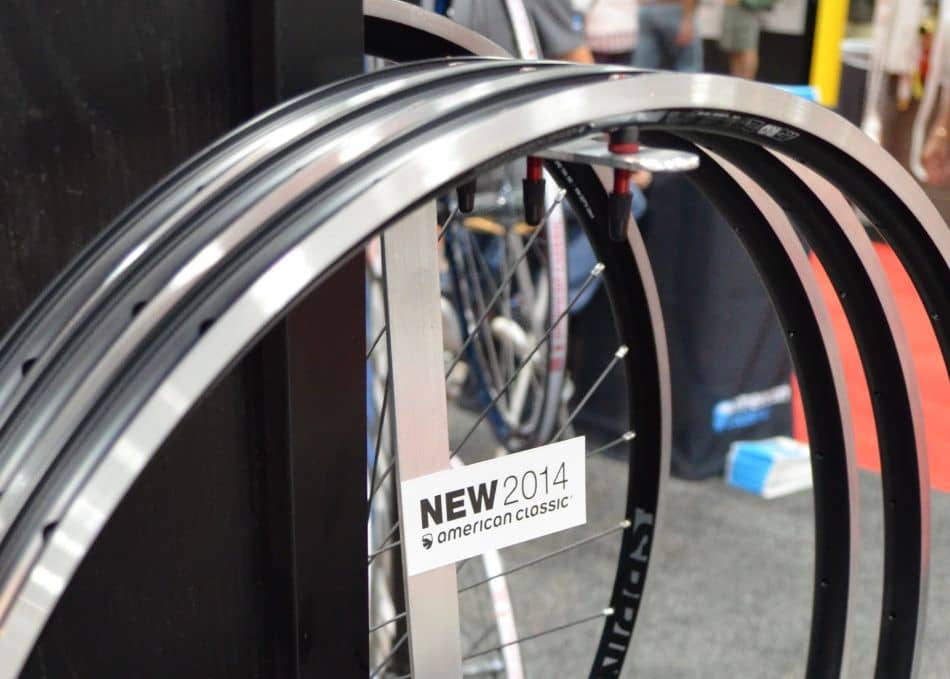
How to Find Your Rim Size
1. You’ll need to remove the tire from your wheel.
2. Measure the inside of the rim, where the tire bead would be located if the tire was on the wheel. Next, measure the width of the inside of the rim.
3. Use the table to see what width tire will fit on your rim.
4. Remember that you need to ensure the tire will fit inside your bike’s frame. Just because a tire fits on the rim doesn’t mean it fits the bike.
Road bike rims and tires are significantly thinner than mountain bike rims and tires. Mountain bike tires are typically designated in inches, as seen in the charts below.
Road Bike Sample Tire Widths
| Internal Rim Width | Potential Tire Size |
| 13-15 mm, 17 – 19 mm | 23-25c |
| 13-15, 17 – 19, 20-21, 22- 23 MM | 25-28c |
| 17-19, 20-21, 22-23, 24-25mm | 30 – 33c |
| 17-19, 20-21, 22-23, 24-25mm | 33 – 35c |
| 20-21, 22-23, 24-25mm | 38 – 40c |
| 20-21, 22-23, 24-25mm | 40 – 43c |
Mountain Bike Sample Tire Widths
| Internal Rim Width | Potential Tire Size |
| 19-23mm | 1.9 inch tires |
| 19-24mm | 2.0 inch tires |
| 19-28 mm | 2.1 inch tires |
| 21-33mm | 2.3 inch tires |
| 25-35 mm | 2.5 – 2.7 inch tires |
Just for example, the Trek 4500 Mountain Bike has 26 inch wheels with 2.2 inch tires, while other mountain bikes have 29 inch wheels.
Measuring Your Wheels for a Bike Computer
Many bike computers will ask for your wheel size to calculate speed, distance, and even average speed. For example, the Ride with GPS app asks for your tire and wheel circumference. The wheel circumference is an easy measurement to get.
1. Set your bike upright.
2. Measure the wheel’s radius with the tire on from the centre of the wheel to the ground.
3. Multiply by 2 to get the diameter of the wheel.
4. Multiply by pi (3.14) to get the circumference. The final number is the number you input into your Ride with GPS app.
Another easy way to measure your tire’s and wheel’s circumference is using a string.
1. Remove the wheel from the bike.
2. Wrap a piece of string around the centre of the wheel with the tire on.
3. Mark the string where it starts to overlap.
4. Measure the length of the string in millimeters.
The psi of your tires will affect this number.
Watch this demonstration of measuring wheel circumference for your bike computer.
If you know your wheel size or ISO number, you can get the circumference from this chart.
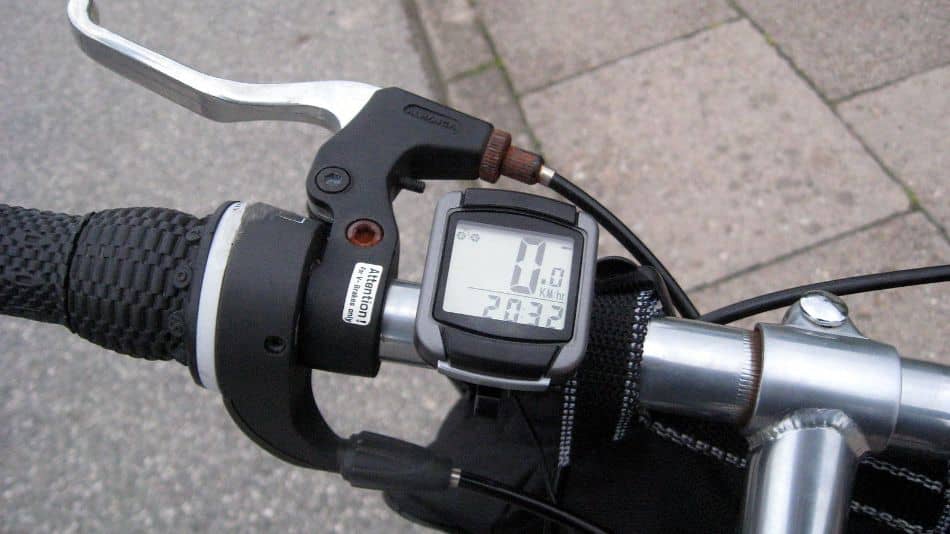
Wheel Circumference Chart for Specific Bike Computers and Apps
| ISO number | Standard Size | Circumference in MM |
| 23-622 | 700 x 23 | 2097 |
| 25-622 | 700 x 25 | 2105 |
| 28-622 | 700×28 | 2136 |
| 32-622 | 700 x 32 | 2155 |
| 35-622 | 700 x 35 | 2168 |
| 38-622 | 700 x 38 | 2180 |
| 47-559 | 26 x 1.9 | 2055 |
| 54-622 | 29 x 2.1 | 2288 |
| 60 – 622 | 29 x 2.3 | 2326 |
If you have any questions about wheel size, whether it pertains to putting on new tires, new rims, or adjusting your bike computer, don’t be afraid to reach out to your local bike shop for more information.
Use the suggested numbers in the charts above to ensure your measurements are on track. When in doubt, consult your owner’s manual and always look on the side of the tire and rim for more information.
Conclusion
Although wheel size can be a bit confusing, once you practice measuring your wheels a few times it will get much easier. Just compare your numbers to the charts to help you know which if you’re on the right track. And if you need more help, remember your local bike shop is just a phone call away.
Frequently Asked Questions
For road bikes, the most common size is a 700c wheel. The 700 means that the wheel’s diameter is 700 mm. The c is part of an old French code that has fallen out of use.
The ISO number for 700 mm tires is 622.
When it comes to mountain bikes, you’ll usually find 26-inch, 27.5-inch, and, more recently, 29-inch wheels.
The ISO number for 26-inch wheels is 559, and for 29-inch wheels, it is 622.
If you don’t have a metric measuring tape, you can use an imperial-based measuring tape. Then, use the formula to convert it to metric numbers:
Inches x 25.4 = MM. For example, a 2.1-inch wide tire would be 53.34 mm wide.
No, children’s bikes are measured in inches. Typical children’s wheels are measured with the tire on and come in standard sizes of 12, 14, 16, 18, and 20 inches.
Generally speaking, mountain bike wheels and road bike wheels are not interchangeable. Even though a 29-inch wheel may technically be the same size as a 700c, they have very different widths. A mountain bike tire is much wider than a road bike, so a mountain bike tire probably won’t fit into your road bike frame.
On the other hand, you may be able to fit a road bike tire into your mountain bike frame, but you wouldn’t have the traction you need, and the hub may not be compatible.

Amanda Whittington is an expert writer, impassioned cyclist, and musician. Coming from a diverse educational background, Amanda discovered a deep-rooted passion for encouraging others through her love of all things cycling, writing, and inspiring hope.
You’ll likely find Amanda pouring over bike specs, comparing the hottest cycling tech, and sporting the latest jerseys while juggling the demands of her editorial calendar, training schedule, tiny homestead, and 6 busy kids.
She spends her free time absorbed in her own gardening and fitness, cycling, and reading, all while encouraging adoption and foster care, championing the underdog, and of course, working with her chickens and goats.

